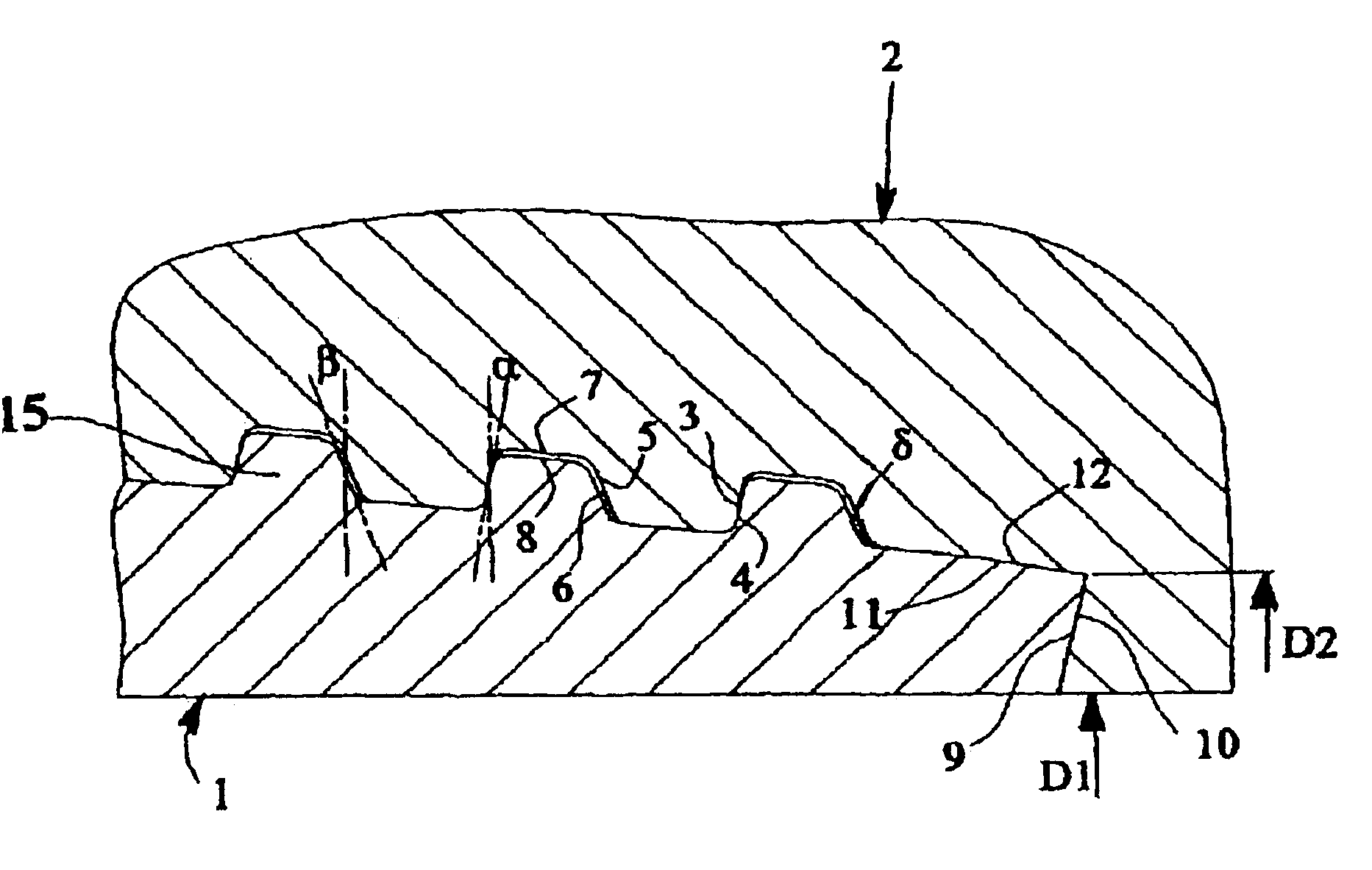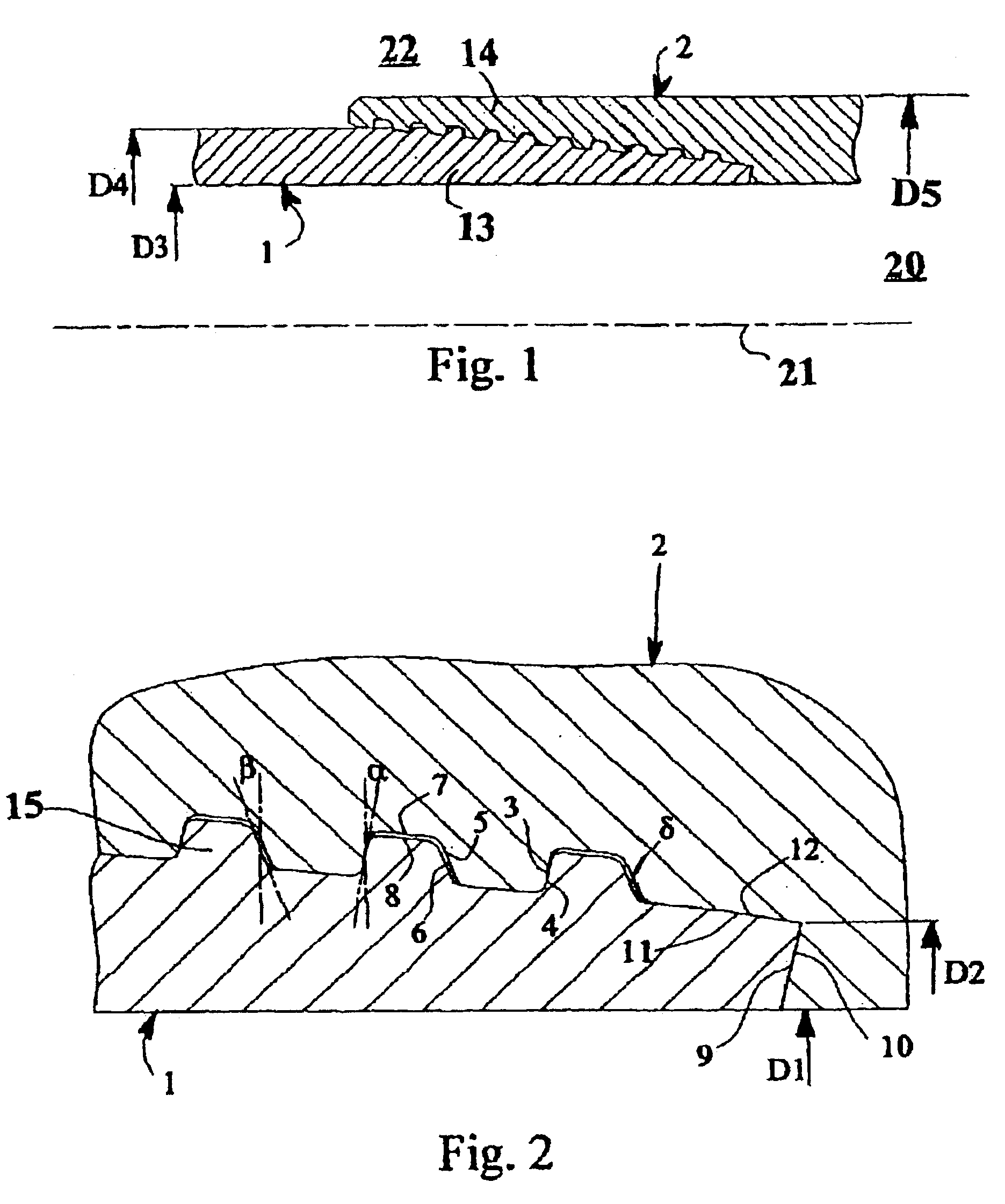Threaded pipe joint
a technology for threaded pipes and joints, which is applied in the direction of threaded joints, pipes/joints/fittings, hose connections, etc., can solve the problems of structural needs in the use of pipes which cannot be satisfied, serious economic consequences, and environmental damag
- Summary
- Abstract
- Description
- Claims
- Application Information
AI Technical Summary
Benefits of technology
Problems solved by technology
Method used
Image
Examples
Embodiment Construction
With reference to the drawings, a joint according to the present invention is now described by way of non-limiting example.
The joint shown in the figures comprises two members, i.e. the male 1 and the female 2. In this case, the male member is a pipe, generally male threaded at both ends, and the female member is a sleeve female threaded at both ends and joins two pipes, by means of two joints as described. The joint defines an inner part 20, containing the axis 21 of the pipe segments 1 and 2, in which the fluid, for example natural gas or petroleum or other similar fluid, flows, and an outer part 22 in which there can be fluids of various kinds, which are also generally pressurised. The external diameter D4 of the pipes, in the area not involved in the joint between the male member and female member can be smaller than the external diameter D5 of the end of the female member in the joint area of a value that varies from 0% in the event of an integral “flush” type joint up to aroun...
PUM
 Login to View More
Login to View More Abstract
Description
Claims
Application Information
 Login to View More
Login to View More - R&D
- Intellectual Property
- Life Sciences
- Materials
- Tech Scout
- Unparalleled Data Quality
- Higher Quality Content
- 60% Fewer Hallucinations
Browse by: Latest US Patents, China's latest patents, Technical Efficacy Thesaurus, Application Domain, Technology Topic, Popular Technical Reports.
© 2025 PatSnap. All rights reserved.Legal|Privacy policy|Modern Slavery Act Transparency Statement|Sitemap|About US| Contact US: help@patsnap.com


